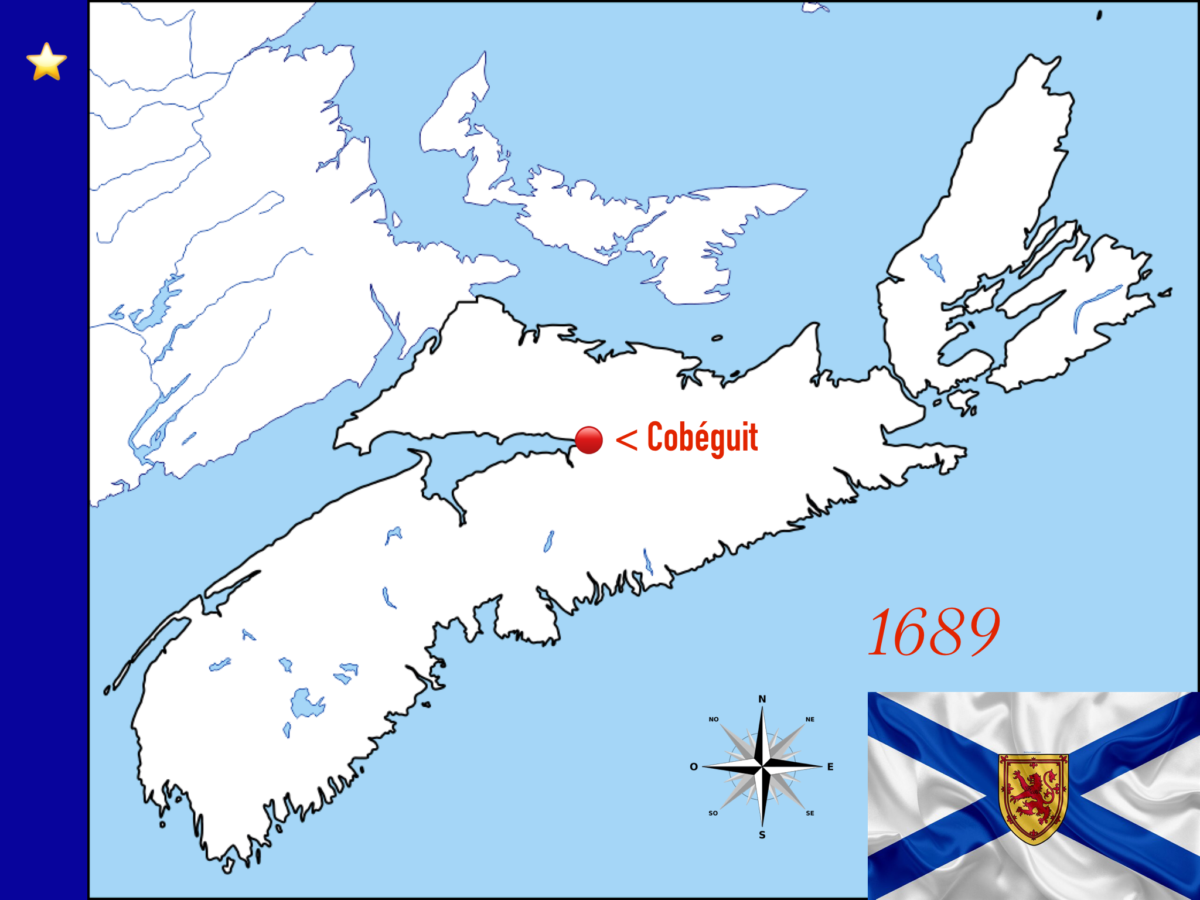
Cobéguit (Cobequid being the English appellation) is the French interpretation given to the Mi’kmaq word “Wecobeguit” which means “the bay that goes far”, in reference to the impressive phenomenon of the tidal range which is the difference in level between the successive levels of a high tide and a low tide. The higher the vertical drop, the further the body of water goes. Long before the arrival of Europeans on the shores of Wecobeguit and without knowing that the tidal range varies in time and space depending on several parameters, the most important of which being the celestial bodies (the Sun, the Moon and the planets) and geography (ocean basin), the Mi’kmaqs knew well how to name the site properly. According to Mi’kmaq legend, the tidal phenomenon was explained by the proportionate dance of a giant whale which agitates the waters of the Bay of Fundy (originally baie Française). Geographically, Cobequid Bay (formerly baie Cobéguit) is located at the head of the Minas Basin which is the extension of the Bay of Fundy which in turn is an arm of the sea. It is in Cobequid Bay that the world’s largest tidal waves occur to the admiration of all visitors. Tides of 16 meters (53 feet) can be observed. They fascinated Mathieu Martin, lord and founder of Cobequid (now Truro).
On March 28, 1689 four leagues (19.2 kilometers) of coastline on Cobequid Bay, located at the eastern end of the Minas Basin, were granted as a seigneurial fief to Mathieu Martin, a weaver from Port-Royal. According to the deed of concession of St. Mathieu Seigneury, Mathieu Martin was “the first (child) born in Acadia among the country’s French”. We know that Lord Martin received his school education at the Father Recollets’ school in Port-Royal and that he operated a post to trade with the Mi’kmaqs in the estuary of the Wecobeguit River (today the Salmon River flowing through Truro).
St. Mathieu Seigneury

St. Mathieu Seigneury’s first tenants arrived towards the end of the 17th century. According to the 1701 census these were the families of Jérôme Guérin, Martin Blanchard, and Martin Bourg, who came from Port-Royal. One of Martin Bourg’s brothers, named Jean, was the husband of Marguerite, sister of Mathieu Martin. Then, prior to the 1707 census, fourteen new families joined the seigneury. Nine of these families were related to Martin Bourg, so that two thirds of the tenants were related directly or indirectly to the Bourg family, but also to that of the Lord himself. We can clearly see here the influence that parental relationships exerted on the settlement of the Acadian seigneuries. Seven years later, according to the 1714 census, Mathieu Martin, then aged 79, still lived in his fiefdom. According to legend he lived there until the end of his life.

In 1748, the parish of St. Peter & St. Paul was recognized as “the principal seat” of Cobequid, surrounded by approximately a hundred families. The church and its cemetery stood in the field somewhere between the blue panel (photo) and the coastline. In fact, the British soldiers burned all buildings, including the church (thus destroying all of the parish registers) to discourage the return of the Acadians.
More precisely, with regard to the expulsion of the parishioners of St. Peter & St. Paul during the Great Upheaval of 1755, opinions vary. Thomas Miller, a researcher-writer, reports in his book on the early settlers of Colchester County that most people were evicted on three carrier vessels. In contrast, the diary of Colonel John Winslow (responsible for the evictions) indicates that Captain Lewis and a number of soldiers sent to Cobequid expected to find two to three hundred Acadians there. But when they arrived, the area had been evacuated. British forces remained in the area from September 23 to 26, setting the buildings on fire. Only two barns near Clifton on the county’s western flank did escape the flames.
